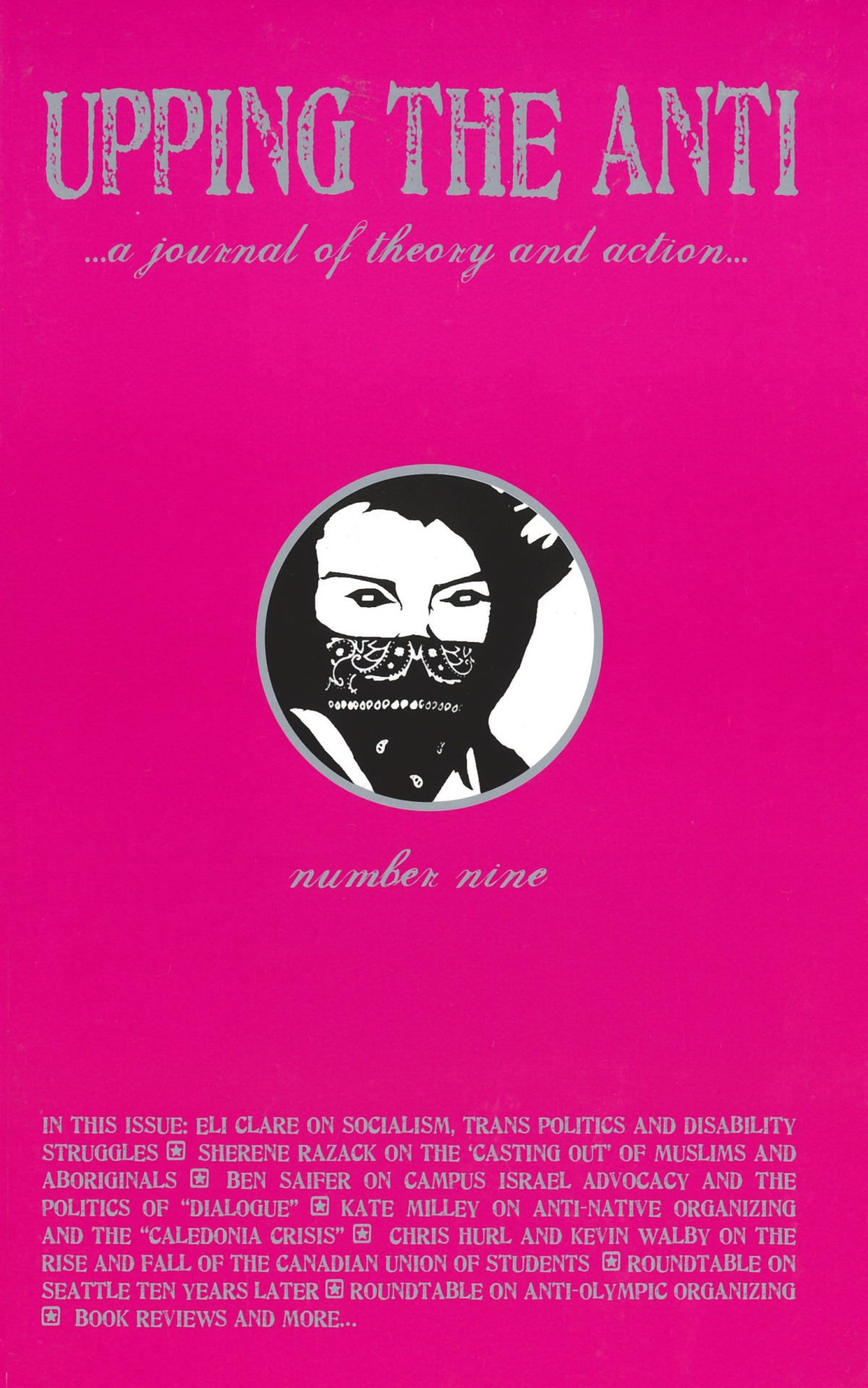Beyond the next Demo
Dear UTA,
Just before sitting down to write this, I read, in Grassroots Post-Modernism by Gustavo Esteva and Madhu Suri Prakash, that the US myth of “rugged individualism” produces ragged individuals. As an organizer working for liberatory social change in the US South, of late, I’ve felt pretty ragged. And I’m thinking about how our movement cultures sometimes embody the illusion of “rugged individualism.” From too many voices, I feel pressure to define our issue, push it harder, and move on to the next action because things are that urgent. And for many, they certainly are that urgent. But working like this, the “our” gets filed down to be narrow like the corn silos dotting fields around my town. It gives credence to the phrase “silo organizing,” which we use around here.
In the interview with Helen Hudson, “Movements Where People Can Grow” (UTA 8), she says: “when I look around, I see a lot of people who are really not thinking about how they’re going to survive materially or emotionally beyond the headlong rush into the next demo” (92). This sentence is a good example of why, at a retreat for the organizers’ collective I work with here in Virginia, The People United, we read this interview to catalyze reflection. Along with germane analysis of building sustainable alternative institutions and organizations which value autonomy, self-determination, and other buzzwords we anti-authoritarians like to hear, Hudson opens up space to look at community-building, healing, relationship dynamics, family, and other parts of our land, bodies, and spirits we are often asked to leave at the door when we enter political spaces. If I’m honest about my motivations, I know that my work for liberation has been as much about the collective as it has been about sludging through the pain of being raised by an alcoholic, Vietnam War veteran father, life in the broken but beautiful US South, and the embrace of a queerness that I’ve often felt was incongruent with the first two. Hudson reminds us (me) that “the degree to which movements can be healing – and the degree to which there’s space for that, for it to be messy but still okay – is directly proportional to the sustainability of the movement and the ability for people to stay involved.”
A few weeks ago, I participated in a training (led by the amazing US queer organization, Southerners On New Ground, southernersonnewground.org). At one point we were asked to draw out our personal resiliency practices and then think about how we make these individual practices collective. This is the challenge of building, as Hudson emphasizes. Before moving on to read the rest of UTA, think about that. How do you bounce back, grow, and thrive? What resiliency practices do you have that can be made communal? We need this as much as any bad-ass, new-fangled strategy or analysis, and I thank UTA for realizing that.
Off to enjoy some sweet corn with friends, one of my resiliency practices,
Patrick Lincoln
Harrisonburg, Virginia

